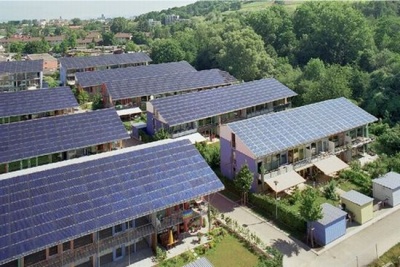Household Model
Households customers hold a large share in the electricity consumption (there are 230 million residential consumers in Europe according to Eurostat), making them an important and influencial factor in the Electricity Market. Taking this into consideration, most brokers will try maximize their residential clients in order to maximize their Market Power, while at the same time they must satisfy their demands (in electricity) in order to keep them under contract.
In this page, the implementation of a household electricity consumer is going to be analysed. Firstly, the basic concepts that had to be nested in the models are presented, as well as the characteristics of every notion developed. This way, it easy for naive users to understand the attributes, the functions and the behaviors of the models, without knowing technical details or terminology. In entities where more analysis is required, there will be additional links in the end of the page.
Attributes
- Name: Every household has a distinctive name so that can be differentiated from the rest.
- Members: every household has a number of persons living inside. Each one has its own personal daily program, which is independent of the rest of the occupants. In TAC Energy Competition, there can be from one (1) up to five (5) occupants in a house.
- Appliances: An organized household must also be equiped with electric appliances, making their occupants' life easier and more convenient. Even though there are some common appliances in every house, not all of the households are well equiped or sharing the same appliances. As a consequence, not all of the households consume the same amount of energy nor utilize the appliances available at the same time.
- Daily / Weekly Load: In the end of each day / week, the aggregated power load can be presented to anyone in interest. This may be useful for someone who want to use historical data in order to discover patterns or habits of the inhabitants.
- Year Consumption: This is a statistical mean of the yearly household consumption (based on Statistisches Bundesamt 2009), in order for the brokers interested to have a mean value in mind.
Functions
- Initialize (private): this is the constructor function of the Repast Agent(s) responsible for the Household Simulation. It takes as inputs the name of the household, in order to distinguish them with each other, the configuration file parametes, as well as the Public Vacation Vector (see below on Related Pages). Having all the information at hand and by using some of the functions described below, a fully functional, randomized and dynamic household is created.
- Member Randomizer (private): a simple function to select the random number of occupants for the household (from one up to five).
- Add Person (private): this function creates a number of Persons and makes them members of a household.
- Check Probability (private): another simple function responsible for deciding if an appliance is installed in a household. Each appliance has a probability of being part of a household. This percentage was extracted by diverse sources of statistical data through out Europe.
- Fill Appliances (private): After filling the household occupants, it's time to fill the house with the electrical equipment necessary. By using Check Probability (see above), the house is supplied with a random number and kind of Appliances, each one with its specialized operation pattern, ready to function at will.
- Fill Daily Load (private): At the beginning of each day (or each week), the Household agent is aggregating the operational patterns of its appliances and provide the daily power load that is going to use. Since some appliances work all day long, while others need someone to operate them etc., each day's load is totally independent from any other one. The most important factor in household's power load is occupants' presence (or absence).
- Is Empty / On Vacation: these two functions are used by occupancy dependent appliances, in order to check if someone is at home or is it empty. This way the function of some appliances may be delayed until someone is back, or be cancelled.
- Step Function (private): this is the function that works synchronously in every household in the simulation. With each tick (one quarter of an hour) the house status is refreshed: people are working or coming back into the house, appliances start or stop functioning and so on. In addition, if the simulation is running in RTP cost market patterns, then every tick mark a new value for the cost of electric energy.
- Show Status: By using this function, we can see the household status for that particular moment (tick) or for that (whole) day: where are the members of the household, which appliances are working and their consumption etc.
